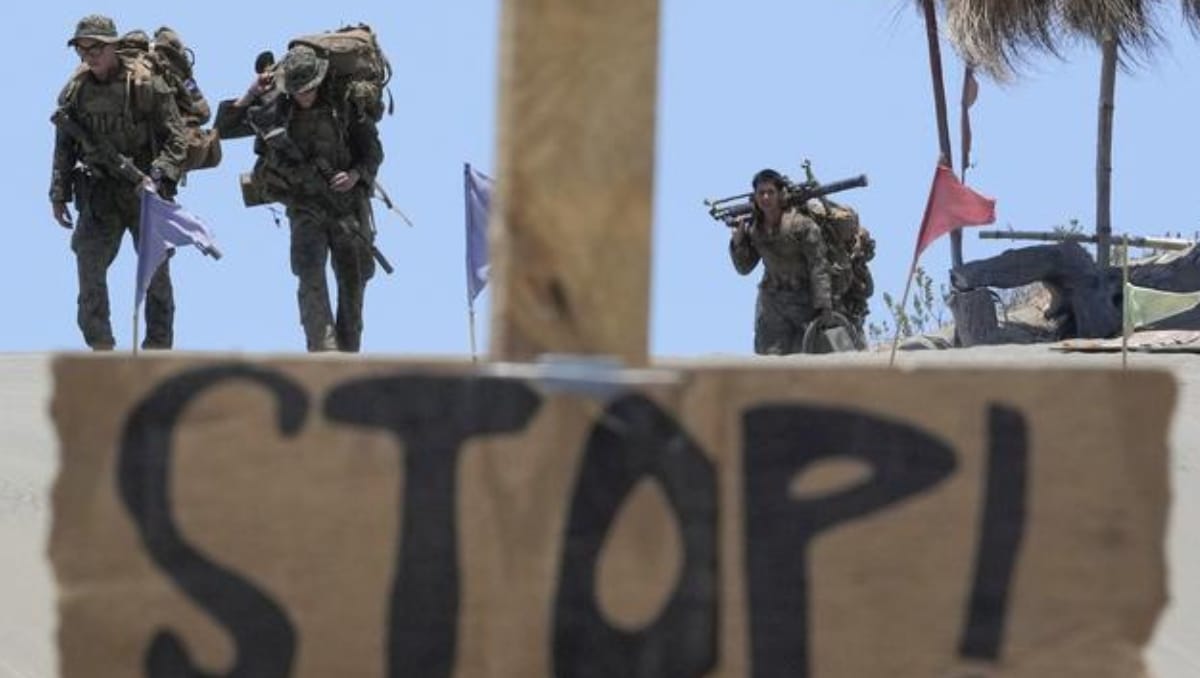Military powers from the Joined together States, Australia, and the Philippines propelled a
torrent of tall accuracy rockets and big guns as portion of huge scale war drills in the South
China Ocean that has antagonized Beijing
Military constraints from the Laoag City, Australian and the Philippines propelled a torrent
of high-precision rockets, ordnance fire and airstrikes to sink a transport on May 8 as part of
large scale war drills in waters confronting the debated South China Ocean that have
antagonized Beijing.
Unified Military Strength
Military authorities and ambassadors from a few nations, along with writers, observed the
show of capability from a peak along a sandy coast in Laoag City on May 8 in Ilocos Norte,
Philippine President Ferdinand Marcos Jr.’s northern domestic province
More than 16,000 military faculty from the Joined together States and the Philippines,
supported by a few hundred Australian troops and military eyewitnesses from 14 nations
were taking an interest in yearly combat-readiness drills called Balikatan, Tagalog for
shoulder-to-shoulder, which began on April 22 and will conclusion on Friday.
It’s the most recent sign of how the United States and the Philippines have supported a
defence arrangement organisation that began in the 1950s. Mr. Marcos has requested his military to move its center to outside defence from decades-long residential anti-insurgency operations as China’s progressively forceful activities in the South China Ocean have become a top concern. That key move dovetails with the endeavours of President Joe Biden and his organisation to strengthen a bend of organizations together in the Indo-Pacific locale to counter China.
Tensions Escalate
China has irritated the Philippines by more than once irritating its naval force and coast
protect ships with the utilization of capable water cannons, a military-grade laser, blocking
developments and other unsafe manoeuvres in the tall oceans close two debated South
China Ocean shores that have driven to minor collisions. Those have caused a few wounds
to Filipino naval force faculty and harmed supply boats.
China has charged the Philippines of setting off the threats in the debated waters by
infringing into what it says are its seaward domains, delineated by 10 dashes on an outline.
This has regularly provoked the Chinese coast guard and naval force to take steps to
remove Philippine coast protection and other vessels from that range.
After an hour of the combat-readiness drills, dark smoke began to surge from the strict
enemy transport that was struck by rocket fire and it began to sink, as appeared on a screen
observed by outside military visitors and writers. U.S. and Philippine warplanes afterward
dropped bombs on the BRP Lake Caliraya, the target transport, which was made in China
but decommissioned by the Philippine naval force in 2020 due to mechanical and electrical
issues, agreeing to Philippine military officials.
Philippine military authorities said the manoeuvres would reinforce the country’s coastal
defense and disaster-response capabilities and claimed they were not pointed at any nation.
China has contradicted military drills including U.S. strengths in the locale as well as
expanding U.S. military organizations, which it cautioned would ratchet up pressures and
obstruct territorial soundness and peace
Regional Alliances Strengthen
In February final year, Marcos affirmed a more extensive U.S. military nearness in the
Philippines by permitting turning bunches of American military strengths to remain in four
more Philippine military camps. That was a sharp turnaround from his forerunner Rodrigo
Duterte, who feared that a bigger American military impression would antagonize Beijing.
China emphatically restricted the move, which would permit U.S. powers to build up
organizing grounds and observation posts in the northern Philippines over the ocean from
Taiwan, and in western Philippine territories confronting the South China Sea.
